Important and valuable artwork from the Egyptian Museum in Cairo Egypt and other important locations have been stolen during the Egyptian Revolution (possibly from insiders of the old regime).
Dr. Zahi Hawass, Egyptian Minister of Antiquities, announced on Feb 13, 2011, that a number of art objects had been stolen from the Egyptian Museum in Cairo and that De Morgan’s magazine at Dashur had been looted.
The following are some of the items known to have been stolen:
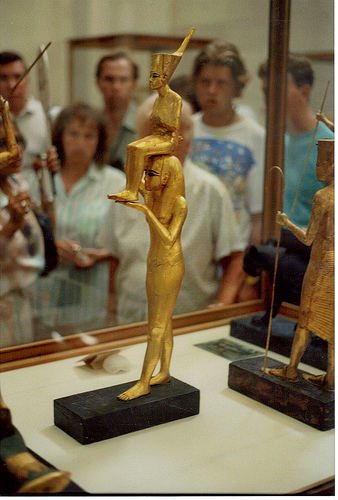
Gilded wood statue of Tutankhamun being carried by a goddess, photo by Paul Lombardo.

Gilded wood statue of Tutankhamun harpooning. Only the torso and upper limbs of the king are missing, photo by Frank Rytell.
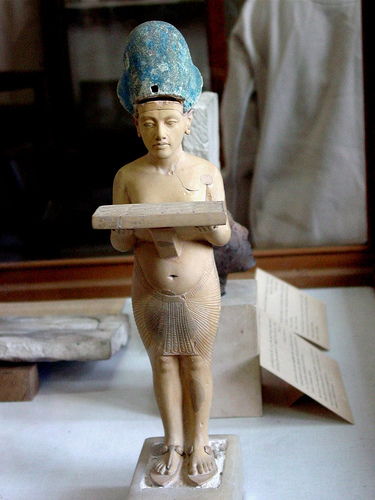
Limestone statue of Akhenaten holding an offering table, photo by tutincommon.
Statue of Nefertiti making offerings, not identified yet.
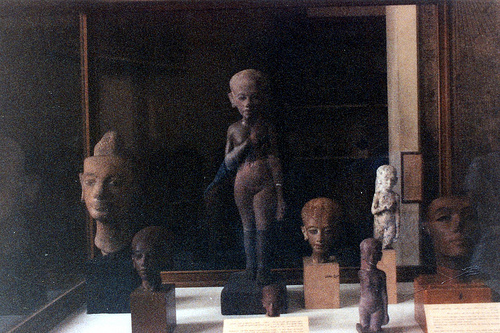
Sandstone head of an Amarna princess (potentially one of those pictured here), photo by Glenister 1936.
Many of the Amarna princess heads are carved in quartzite. There is at least one in red sandstone though, Cairo JE 44871. There is supposedly a photo of it in Borchardt, Ludwig, Ausgrabungen in Tell el Amarna 1912/13, in: Mitteilungen der Deutschen Orient-Gesellschaft 52, 1913, pl. 21.
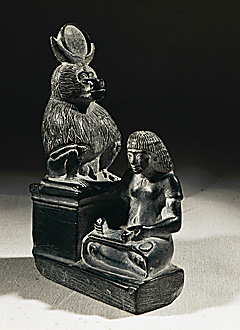
Stone statuette of a scribe from Amarna (a possible candidate, a statuette of a scribe and Thoth, 14cm tall.
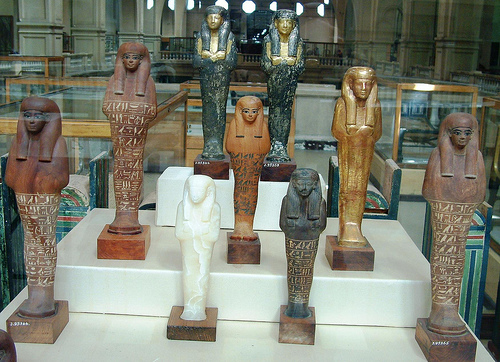
Wooden shabti statuettes from Yuya (11 pieces), photo by sergiothirteen.
Heart Scarab of Yuya.
The original publications of the objects from the tomb of Yuya and Tujya seem a bit unclear about Yuya’s heart scarab. A number of scarabs have the name of Tujya inscribed on them and none seem to be mentioned with Yuya’s name. An unattributed scarab from the tomb, Cairo CG 51165, is described in James Quibell’s The Tomb of Yuaa and Thuiu, Catalogue Général du Musée du Caire 51001-51191 (Cairo: IFAO, 1908). The scarab is described thus on page 61 and a photograph is provided, reproduced below, on plate 49: “51165. Scarab. Green feldspar. Length 0m 114mill. (pl. XLIX). Scarab of green stone decorated with gold; the base plate is longer than the scarab itself and is carved to represent a heart. The end was pierced for suspension and is broken. There is a second hole through the middle of the plate. On the base is an incised inscription of thirteen lines containing the Heart Chapter (xxxb). BIBL. : Th. Davis, Tomb of Iouiya, p. 33, pl. XLIII”.
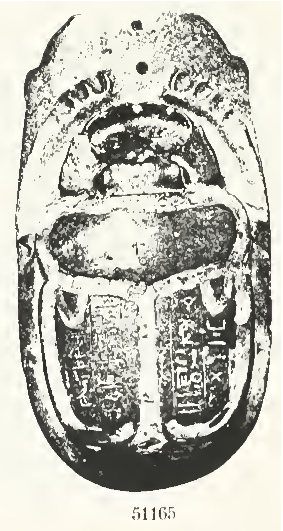
Heart Scarab of Yuya(?), photo from Quibell, The Tomb of Yuaa and Thuiu, 1908, pl. 49..
The entry for this scarab is linked in the bibliography to what seems to be a completely different scarab in Theodore Davis’ The Tomb of Iouiya and Touiyou (London, 1907), a scarab is depicted in the painting reproduced here in plate 43 and described on page 33 as: “Scarab-amulet in green beryl with head chipped, and inscribed with the chapter of the Heart from the Book of the Head. It bears the name of Touiyou.”
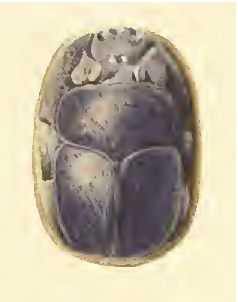
Heart Scarab of Tujya, photo from Davis, ‘Tomb of louiya’, pl. XLIII.
The first scarab seems the much more likely candidate, but I’m still not sure, and I hope that we can clarify this soon.
See Statues of Tutankhamen, Akhenaten and Nefertiti stolen from the Egyptian Museum, Cairo













